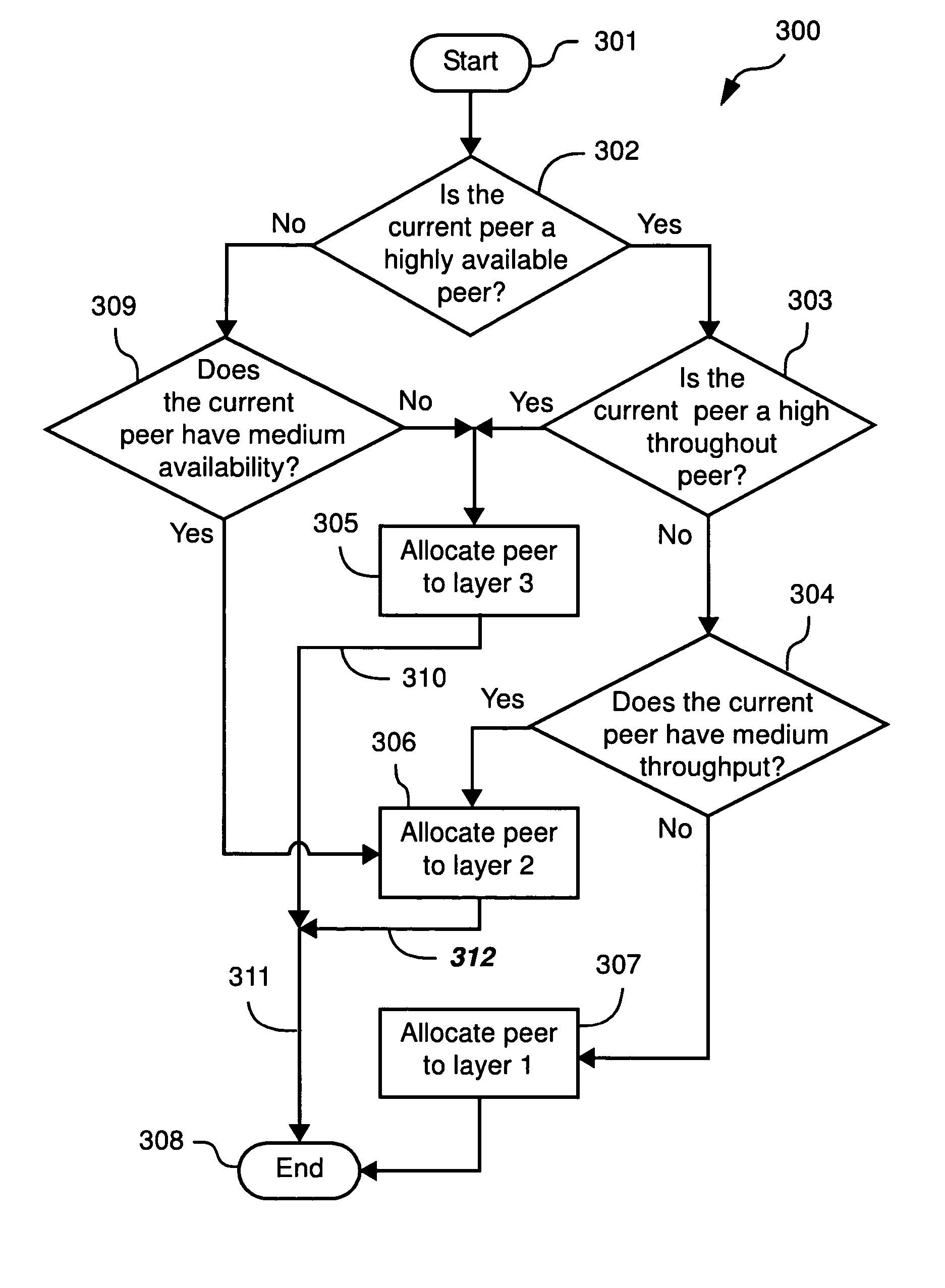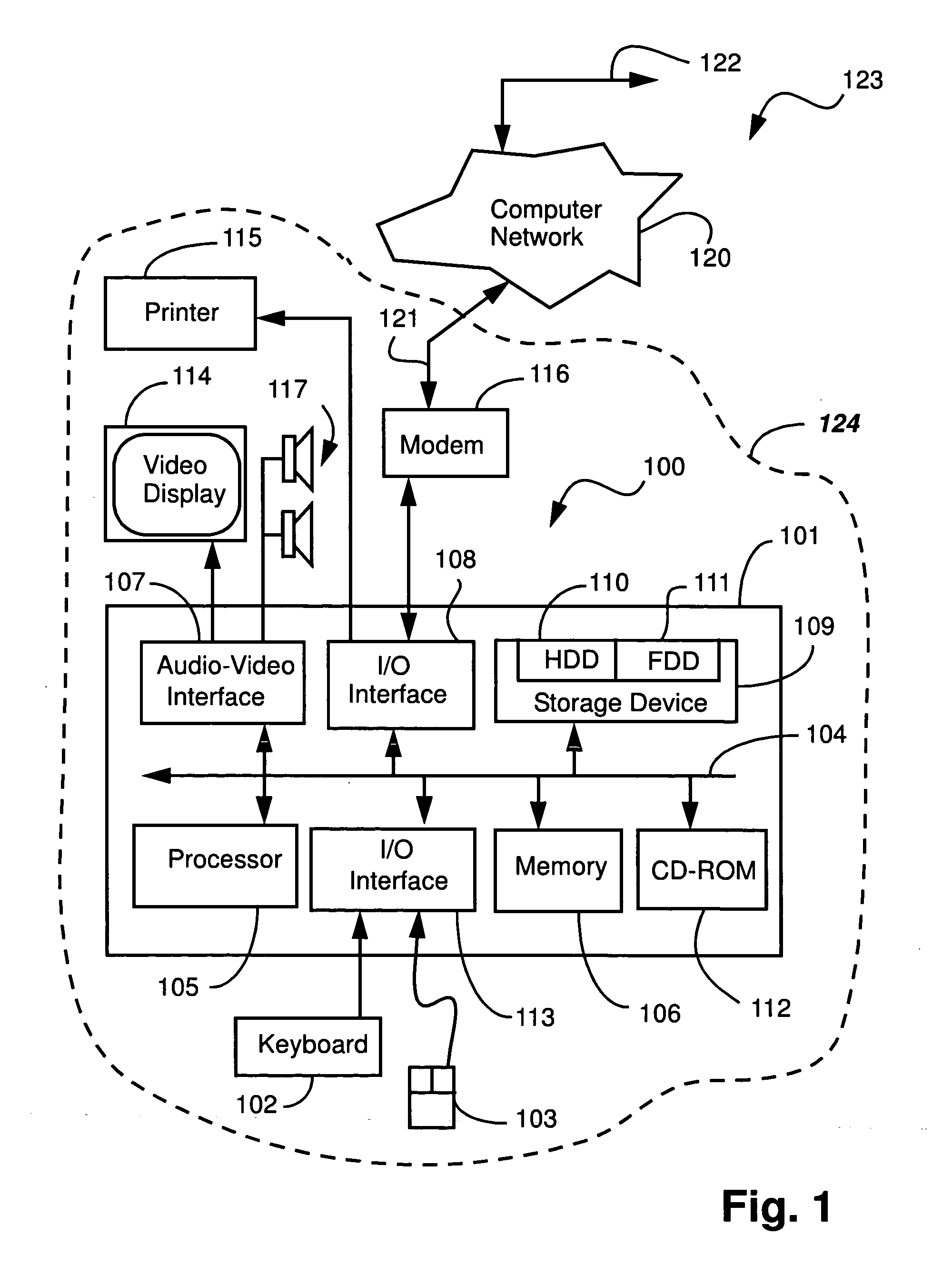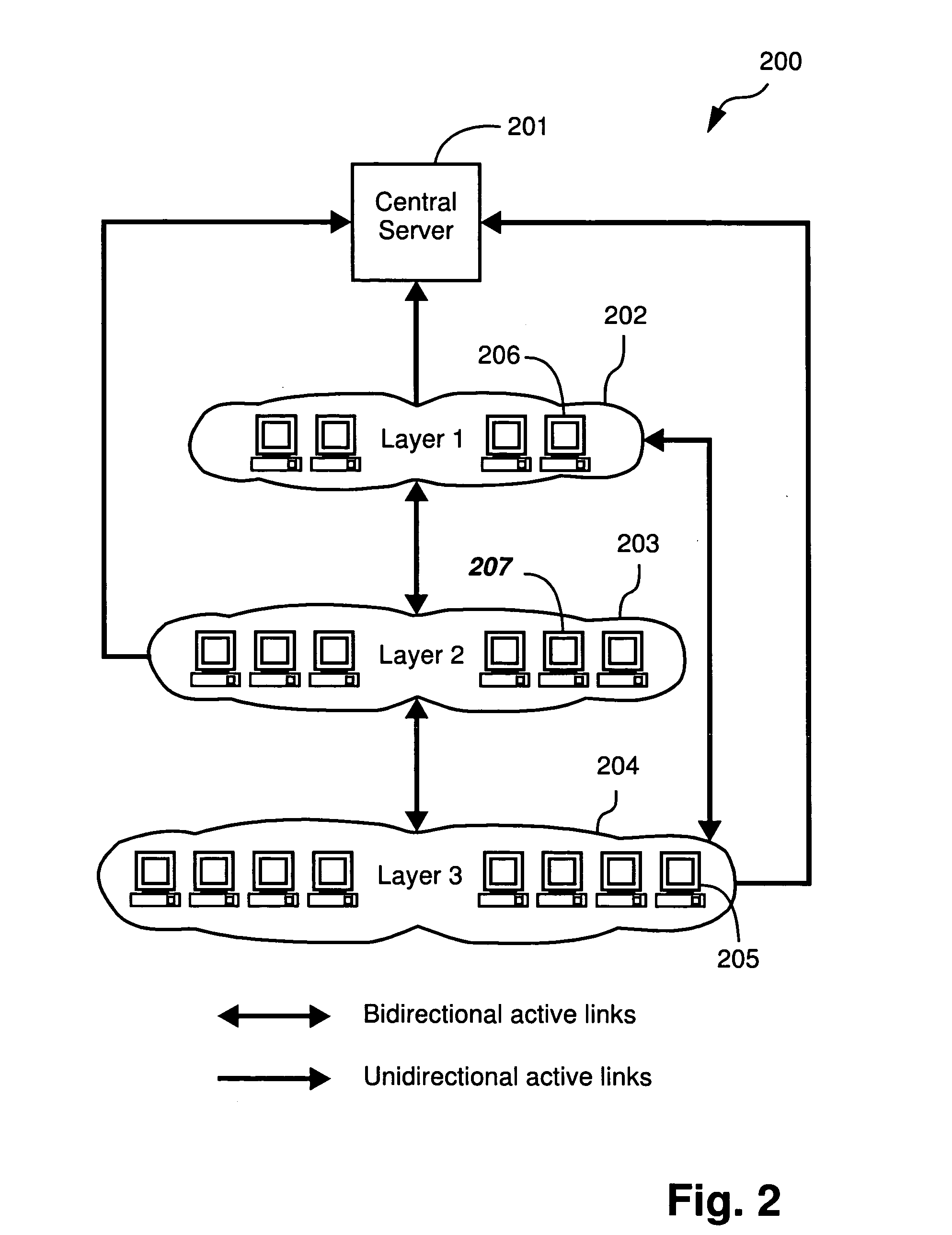Distributed data caching in hybrid peer-to-peer systems
a technology of distributed data and peer-to-peer system, which is applied in the direction of data switching network, digital transmission, instruments, etc., can solve the problems of hybrid peer-to-peer system poor service quality, complex and limited logic of clients in client/server arrangement, and the inability to provide high-quality services to clients. achieve the effect of improving system performan
- Summary
- Abstract
- Description
- Claims
- Application Information
AI Technical Summary
Benefits of technology
Problems solved by technology
Method used
Image
Examples
Embodiment Construction
It is to be noted that the discussions contained in the “Background” section and that above relating to prior art arrangements relate to discussions of systems that form public knowledge through their use. Such should not be interpreted as a representation by the present inventor(s) or patent applicant that such documents or devices in any way form part of the common general knowledge in the art.
Where reference is made in any one or more of the accompanying drawings to steps and / or features, which have the same reference numerals, those steps and / or features have for the purposes of this description the same function(s) or operation(s), unless the contrary intention appears.
A number of terms are used throughout the description, and a brief outline of these terms is now presented. A “sharing peer” is a peer machine that is the source of data that is to be shared with other peers in the system. A “responsible peer” is a peer machine which caches at least part of the data that is ...
PUM
 Login to View More
Login to View More Abstract
Description
Claims
Application Information
 Login to View More
Login to View More - R&D
- Intellectual Property
- Life Sciences
- Materials
- Tech Scout
- Unparalleled Data Quality
- Higher Quality Content
- 60% Fewer Hallucinations
Browse by: Latest US Patents, China's latest patents, Technical Efficacy Thesaurus, Application Domain, Technology Topic, Popular Technical Reports.
© 2025 PatSnap. All rights reserved.Legal|Privacy policy|Modern Slavery Act Transparency Statement|Sitemap|About US| Contact US: help@patsnap.com



